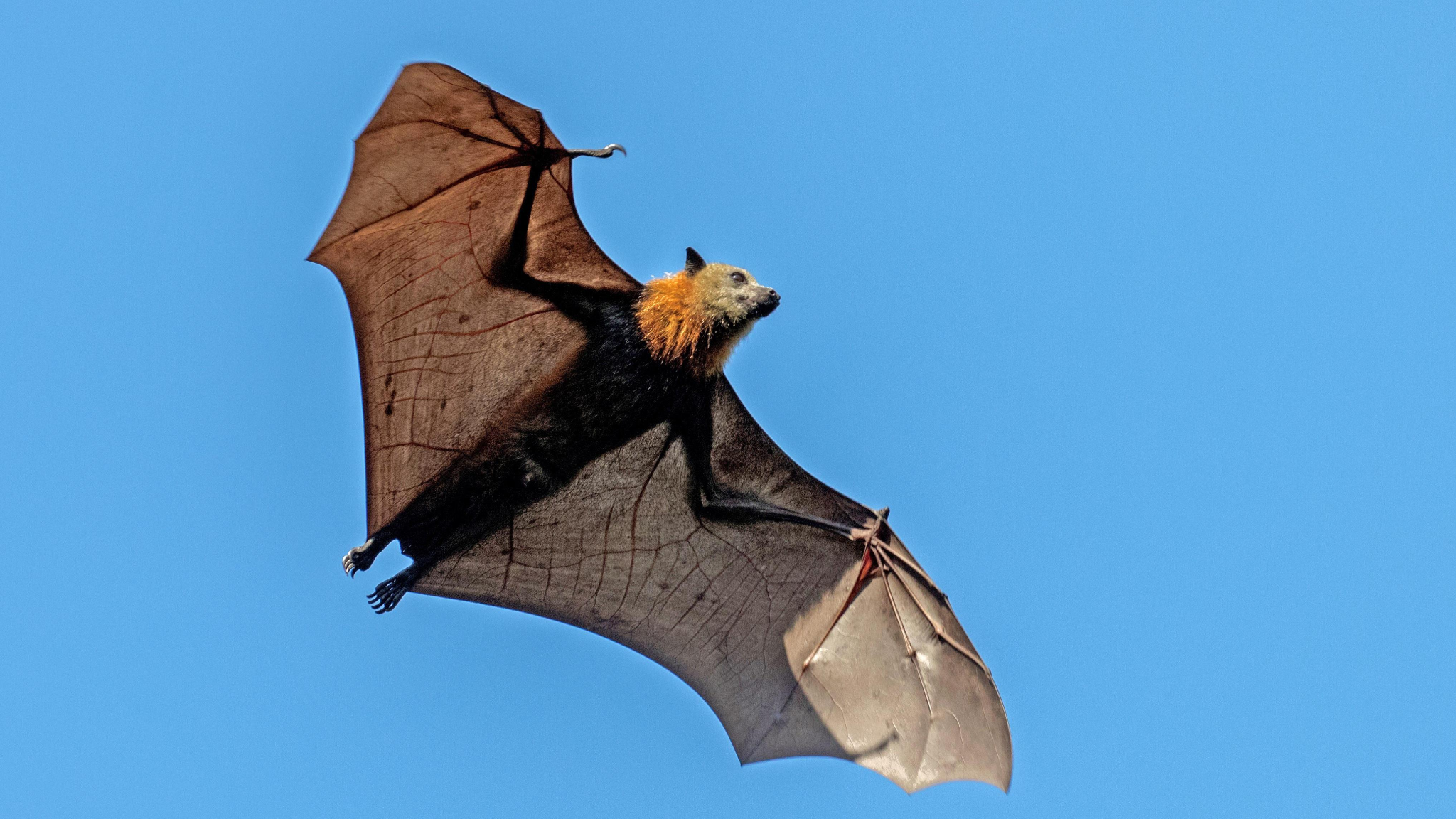Important Facts For Prelims
Indian Flying Fox Bat: Pteropus giganteus
- 16 Aug 2023
- 4 min read
Why in News?
In a recent study, conducted by scientists from the Centre for Ecological Sciences in the Indian Institute of Science and the Wildlife Institute of India, the nectar and fruit-eating flying fox (Pteropus giganteus), India's largest bat species, has taken on a new dimension of interest.
- Beyond its nocturnal activities, these flying foxes have been found to spend a notable portion of their day-roosting time engaged in environmental vigilance.
What are the Key Highlights of the Study?
- The study unveiled that Pteropus giganteus practices vigilant behaviour during daylight roosting, dedicating about 7% of their resting time to watch for dangers, contrary to their nocturnal nature.
- The study distinguished between social vigilance (observing nearby individuals for conflicts) and environmental vigilance (watching for signs of danger in the surroundings).
- The study observed that vigilance levels varied based on the spatial positioning of the bats within roosting trees, confirming the edge effect hypothesis.
- These bats, acting as a keystone species known for their nectar and fruit-eating habits, contribute significantly to pollination and seed dispersal, thereby playing a vital role in maintaining ecosystem health and biodiversity.
- A keystone species is one that has a disproportionately large effect on its natural environment relative to its abundance, impacting many other organisms in an ecosystem and helping to determine the types and numbers of other species in an ecological community.
- The findings emphasize the urgency of protecting Pteropus giganteus and its habitat to ensure the preservation of its ecological role and the overall balance of the ecosystem.
What are the Key Points About Pteropus giganteus?
- About:
- Pteropus giganteus, commonly known as the Indian flying fox, is a remarkable bat species native to the Indian subcontinent.
- Appearance:
- Pteropus giganteus is characterized by its large size and fox-like facial features.
- Usually displays a dark brown, gray, or black body, often with a distinct yellowish mantle (typical of Pteropus genus).
- Males are generally larger than females.
- Geographic Range:
- Pteropus giganteus occurs in tropical regions of South Central Asia, from Pakistan to China, and as far south as the Maldive Islands.
- Habitat:
- These animals can be found in forests and swamps. Large groups of individuals roost in trees such as banyan, fig, and tamarind. Roosting trees are usually in the vicinity of a body of water..
- Conservation Status:
- Negative Impact:
- Indian flying foxes considered as vermin cause extensive damage to fruit orchards, and are therefore considered pests in many regions. They may also be responsible for spreading disease, particularly the Nipah virus, which causes illness and death in humans.







